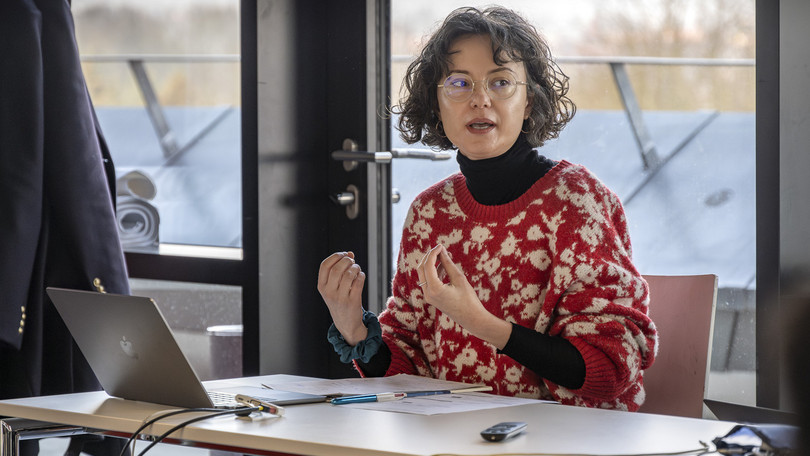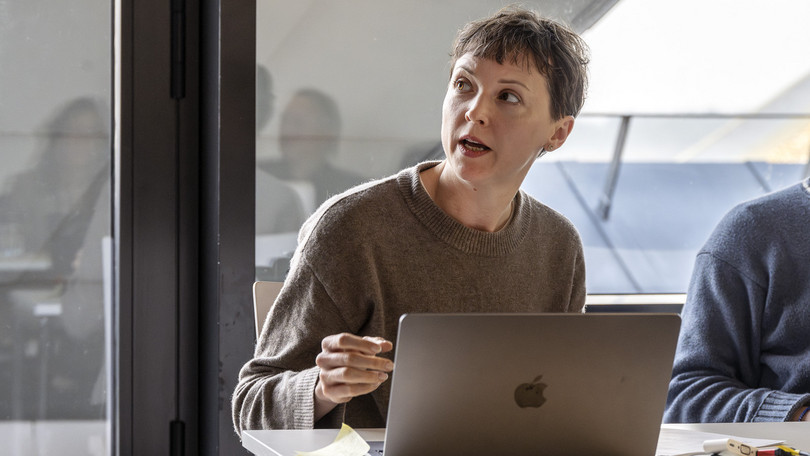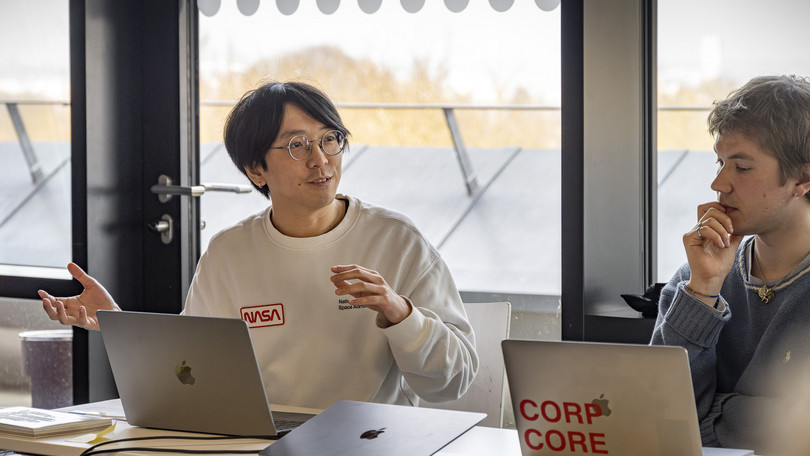LIAS Symposium: Performativity, Memory and Imagination of Technical Images
Cognition, performativity and fantasy - rethinking AI-generated images
2025-03-03 Can a picture think? Is it creative and imaginative? On February 12, Erich Hörl (LIAS Co-Director) and Paula Bertúa (LIAS Fellow) asked this question with international guests in an interdisciplinary examination of the role of technical images in the culture of memory, artistic practice and social processes. In addition to a panel discussion, there was a performance, a lecture and a concluding discussion.
Paula Bartúa opened the event with a reflection on the interplay between the real and the possible. She presented cinema as a tool that helps us to open up reality, with images acting as “skins” that enable access to the world. Her discussion marked a shift from the traditional anthropocentric view to a post-anthropocentric perspective in which performativity in the visual field and a technological ontology take centre stage.
A central theme was the question of how our understanding of inside and outside is changing. She discussed how memory and fantasy are increasingly externalised and linked this idea to the theories of Vílem Flusser (1920-1991) and the possibility of technical images. Fantasy was presented as a concept linked to the non-human, nonetheless at the same time understood as deeply human.
In his lecture "The Eye in the Media and as a Medium: Materiality and Technical Individuation", Renzo Filinith (Johannesburg) dealt with the de-anthropologisation of the eye and its role in the production of knowledge. The image was presented as part of a process of meaning-making and knowledge, whereby he referred to the theories of Bernhard Stiegler (1952-2020) and Gilbert Simondon (1924-1989). For the French philosopher Simondon, the subject emerges in exchange with its technical environment, which encompasses not only the material environment but also its technical nature. Photographic devices are described as prostheses for people, which lead to a "crisis of focussing" in modern technology.
According to Filinith, this crisis and the question of perception led to a de-anthropologisation of the image. For Stiegler, the eye is losing its central role in a technological system and the image is becoming an autonomous part of a technology that is no longer dependent on the human eye.
In her presentation "Has Imagination Always Already Been the Matter of the Nonhuman", Snježana Šimić (Paris) explained that imagination is understood as both a non-human and a human concept. She drew on philosophies from Aristotle to Immanuel Kant to illustrate how imagination can both lead the particular to the general and create new, innovative possibilities. Theodor W. Adorno and Gilles Deleuze expanded these perspectives by presenting the productive and reproductive imagination as inextricably linked.
Imagination was discussed as a tool for breaking down the boundaries of the particular and as a creative force that goes beyond the purely human. Jean-François Lyotard (1924–1998) saw the “inhuman” as a productive part of human existence, which further fuelled the discussion about the relationship between humans and technology.
The most recent manifestations of fantasy as a non-human concept were examined in the context of automated photographs and AI images. Works by artists Michael Wolf, Trevor Paglen and Marcus De Sieno provided examples of the automation of images that no longer contain a productive imagination in their reproduction. The idea of “photograph-ish” images, which appear to be photographs but no longer have a real origin, was also discussed.
In her contribution "Synthetic Memories, Virtual Histories. AI-Generated Photorealism and the Remaking of the Past", Katherina Weinstock (Karlsruhe) focussed on the flood of images generated by AI and the resulting question of how they can expand reality without being fakes - for example as memory aids for people suffering from dementia. AI images decouple the indexicality of photographs and replace it with an affective bond that transfers the lack of credibility. This was explored in greater depth in case studies such as those of Austrian artist Claudia Larcher. In particular, the power of imagination and the ability to represent history and memory were discussed as key features of the role of AI in art and social perception.
The lecture performance by Sheung You (Helsinki) and the lecture “Technical Images as Tower of Babel: Six Memos” by Laura González Flores (Mexico City) took the discussion about the technological image to another level. Sheung You, who uses remote sensing techniques in an artistic collaboration, showed how technical images can create a new form of abstraction in which the objects are visible but are “lost” in the image.
Flores’ lecture on technical images as part of a new “production of truth” and the vocabulary of AI images as empty signifiers - using the example of Pieter Bruegel the Elder's painting “The Tower of Babel” (1563) - illustrated the limits of today's concepts and their ethical issues. Her analytical approach was based on six central concepts: Illusion, iteration, regularity, blurring, acceleration, and programmability.
The symposium concluded with the question of whether AI-generated images can serve as a new form of “truth” and memory, given the growing crisis of authenticity and truthfulness in images. The discussion showed how technological images are changing the relationship between perception and cognition, and to what extent these images must be recognised as actors in the creative process. An essential aspect of this development is the ongoing reflection on the “inhuman” in us and the necessary handling of the new technologies that characterise the perception and understanding of history, memory, and fantasy.



